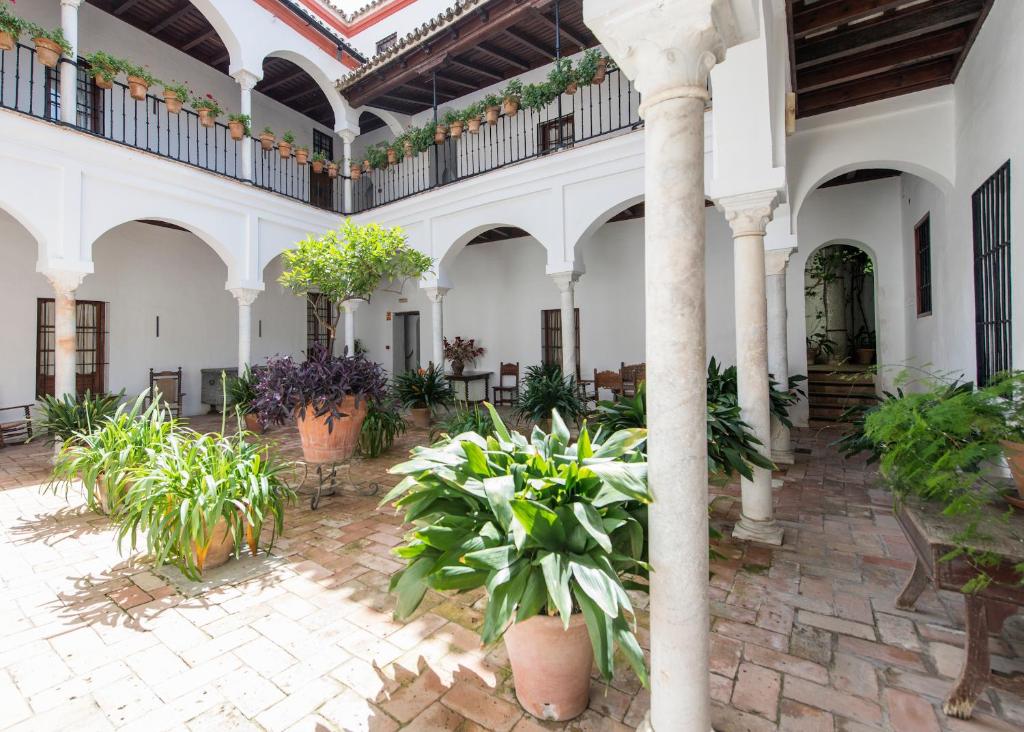Nestled within the labyrinthine embrace of Seville’s Santa Cruz quarter, the casa de la juderia stands as a testament to centuries of intertwined history, architectural ingenuity, and cultural synthesis. More than just a hotel, it is a living museum, an intricate tapestry woven from the threads of Roman foundations, Moorish influences, and the poignant legacy of the city’s Jewish quarter. To step across its threshold is to embark on a captivating journey through time, a chance to unravel the secrets hidden within its sun-drenched courtyards, subterranean passages, and exquisitely preserved interiors.
A Journey Through Time: The Historical Tapestry of Casa de la Juderia
The story of the casa de la juderia is inextricably linked to the ebb and flow of Seville’s past. Its origins can be traced back to Roman times, with archaeological evidence suggesting the presence of ancient structures beneath its current edifice. However, it was during the Moorish era, a period of unparalleled artistic and intellectual flourishing in Al-Andalus, that the foundations of its unique character were truly laid. The intricate tilework, the serene patios with their murmuring fountains, and the graceful arches all bear witness to the sophisticated aesthetics of Islamic architecture.
Following the Christian reconquest of Seville in 1248, the area surrounding the casa de la juderia became the city’s Jewish quarter, or Judería. For centuries, this vibrant community thrived, contributing significantly to Seville’s economic and cultural life. The narrow, winding streets, designed to offer respite from the summer heat and provide a sense of community, still echo with their stories. The casa de la juderia itself was likely a collection of several stately homes belonging to prominent Jewish families, their opulence reflecting their status and prosperity.
The expulsion of the Jews from Spain in 1492 marked a tragic turning point. The quarter, once bustling with life, underwent a transformation. Many of the homes were repurposed, and the casa de la juderia evolved, undergoing various renovations and expansions throughout the centuries. Yet, remarkably, much of its original character, its intrinsic connection to both its Moorish and Jewish past, remained intact, preserved like precious artifacts within its very walls.
Architectural Marvels and Hidden Gems: Exploring the Casa de la Juderia
The true magic of the casa de la juderia lies in its astonishing architectural details and the myriad of hidden nooks and crannies waiting to be discovered. The property is not a single building but rather a collection of interconnected houses, seamlessly woven together by a network of patios, corridors, and even subterranean passages. Each courtyard, with its potted plants, trickling water features, and mosaic tiles, offers a serene oasis, a respite from the bustling streets outside.
One of the most remarkable features is the subterranean Roman bath complex, a tangible link to the property’s ancient past. Stepping into these cool, dimly lit chambers, one can almost hear the echoes of ancient conversations and feel the weight of centuries of history. The meticulous preservation of these baths is a testament to the dedication of the property’s custodians.
Above ground, the intricate azulejos (painted ceramic tiles) that adorn the walls are a feast for the eyes, each pattern telling a silent story of Moorish artistry and Andalusian craftsmanship. The wooden ceilings, often intricately carved, showcase the mastery of Mudejar artisans who continued the rich artistic traditions even after the Christian reconquest. The deliberate integration of these diverse architectural styles is a defining characteristic of the casa de la juderia, reflecting the layered history of Seville itself.
Furthermore, the property boasts numerous antique furnishings, original artworks, and historical artifacts that further immerse visitors in its rich past. Each room, while offering modern comforts, retains a sense of timeless elegance, a harmonious blend of the old and the new. The very act of navigating its winding corridors feels like an archaeological expedition, with new discoveries around every corner.
The Enduring Allure: Why Casa de la Juderia Captivates
The enduring allure of the casa de la juderia extends beyond its historical and architectural significance. It offers a unique sensory experience, a chance to truly live within history rather than merely observe it. The scent of orange blossoms wafting from the courtyards, the gentle murmur of fountains, the soft light filtering through ancient windows – all contribute to an atmosphere of profound tranquility and timeless beauty.
For those seeking to connect with Seville’s multifaceted identity, the casa de la juderia provides an unparalleled opportunity. It is a place where the echoes of different civilizations resonate harmoniously, where the spirits of Romans, Moors, and Jews seem to linger in the very air. It serves as a powerful reminder of the complex cultural tapestry that defines Andalusia.
Beyond its historical gravitas, the casa de la juderia also offers an authentic Andalusian experience. Its location in the heart of the Santa Cruz quarter places guests within easy walking distance of Seville’s most iconic landmarks, including the Alcázar, the Cathedral, and the Giralda. Yet, returning to the hotel at the end of a day of exploration feels like stepping into a private sanctuary, a peaceful retreat from the vibrant energy of the city.


